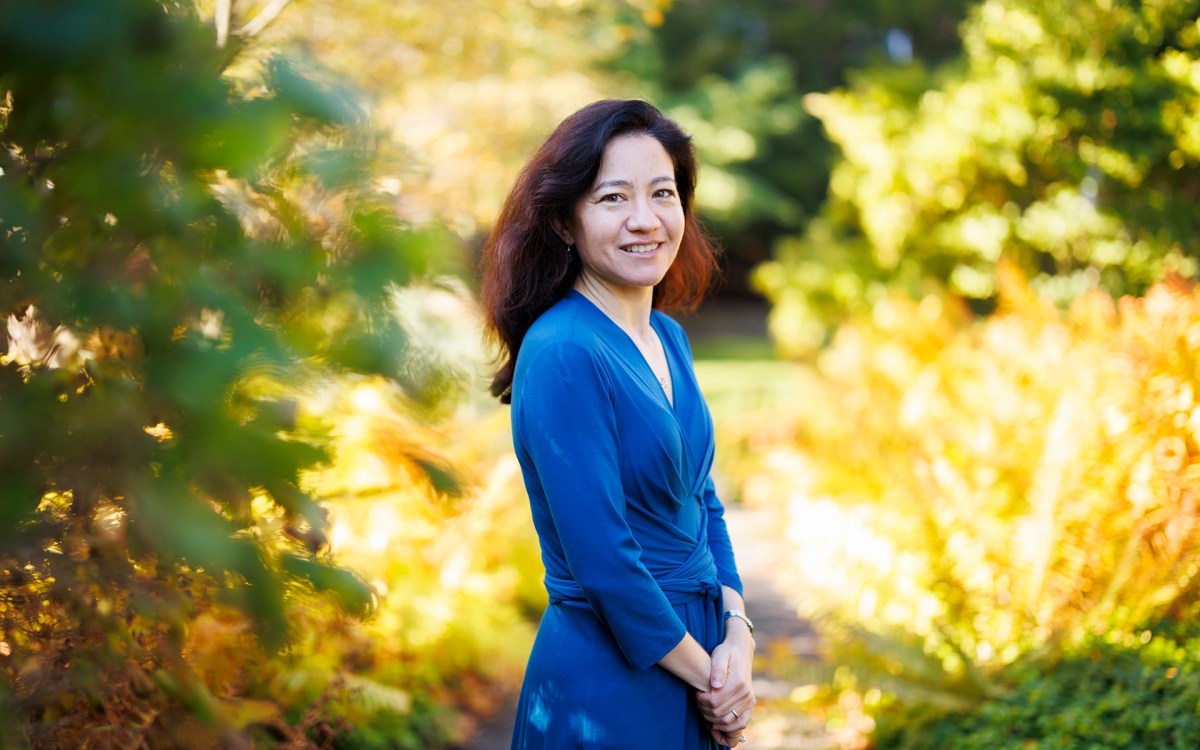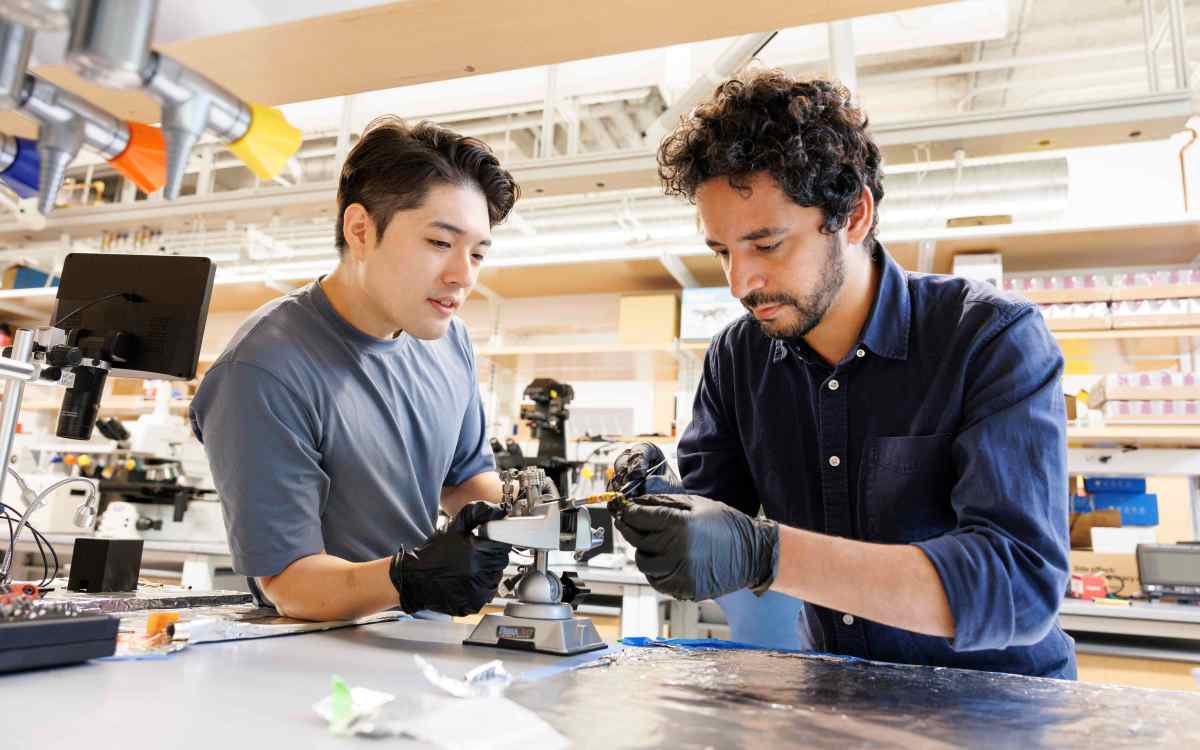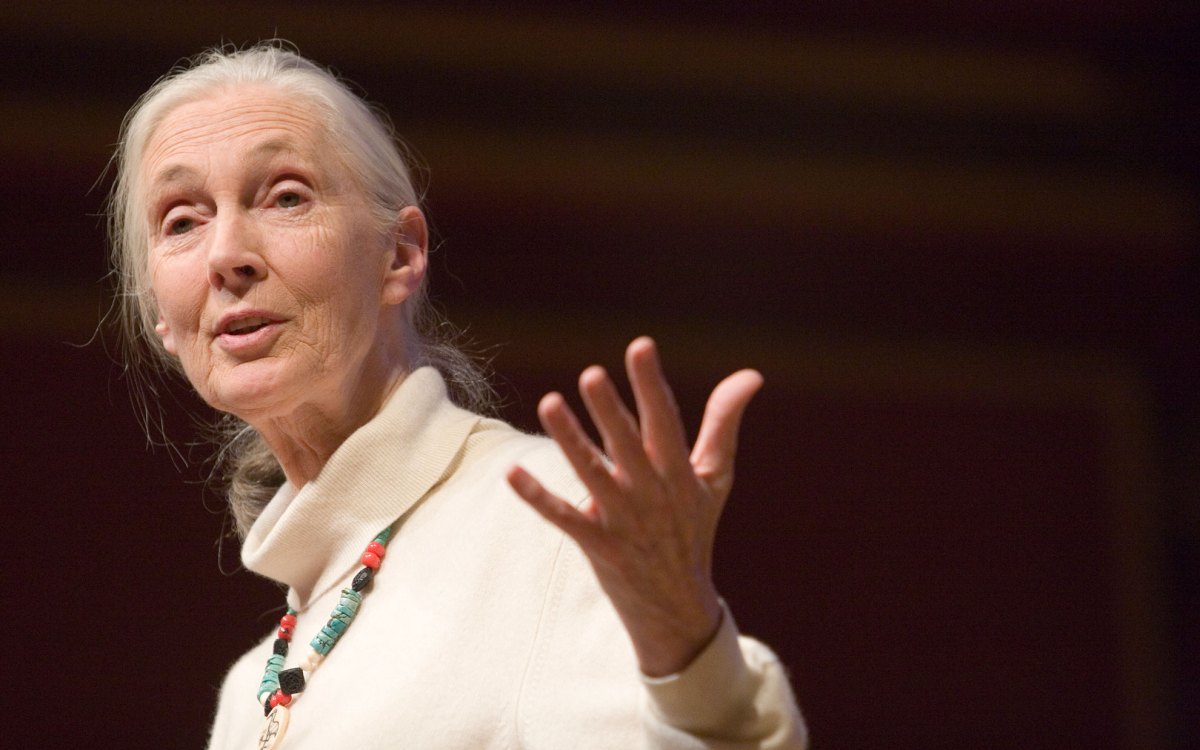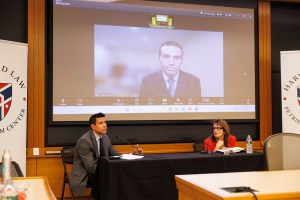Science & Tech
-

Harsh past might bare its teeth
Early adversity leads to higher aggression and fearfulness in adult canines, study says

-

What will AI mean for humanity?
Scholars from range of disciplines see red flags, possibilities ahead
-

‘Human exceptionalism is at the root of the ecological crisis’
Saving the planet requires getting over ourselves, argues author of ‘The Arrogant Ape’
-

Lauren Williams awarded MacArthur ‘genius grant’
Math professor honored for theoretical breakthroughs with sometimes surprising applications across phenomena such as tsunamis, traffic
-

-

‘She had a sense of caring for everybody that she encountered.’
Richard Wrangham remembers his teacher and colleague Jane Goodall as a force of science, empathy, and hope
-
When problem-solving is a problem
If an ill-timed delivery left them short of linens, nurses observed by Harvard Business School doctoral student Anita Tucker found a way to borrow from another unit. Such initiative taking…
-
Researcher wins Nobel Prize for work in X-ray astronomy
Riccardo Giacconi worked at the Harvard-Smithsonian Center for Astrophysics from 1973 to 1981. During that period, he led the development of the Einstein X-ray Observatory, which was launched in 1978.…
-
The myth of American isolationism
American diplomacy in the 1920s was subtle but ambitious and effective, instead of isolationist, argues Harvard Assistant Professor of Government Bear F. Braumoeller. American policy in the years leading up…
-
Daddy longlegs have a global reach
Huge numbers of arachnid and insect species remain unknown. Arachnologists like Gonzalo Giribet, toiling in relative obscurity, routinely identify new species – and their work is far from over. Giribet,…
-
From cradle to grave
Astronomers have been using the Chandra X-ray Observatory and radio telescopes to observe two opposing jets of high-energy particles emitted following an outburst, first detected in 1998 by NASA’s Rossi…
-
Report documents health effect of biodiversity
A new report catalogues the connections between biodiversity and human health. The interim executive summary was presented at the United Nations in late October 2002, following the U.N. World Summit…
-
Heinz Center report presents environmental indicators
Statistics and reports on environmental damage and progress routinely come from dozens — if not hundreds — of nonprofit, government, and other agencies. Often the information disagrees with previously published…
-
Pregnancy and delivery deadly for many Afghan women
Lynn Amowitz, a researcher at Brigham and Women’s Hospital an a medical instructor at Harvard Medical School, found that women in the Herat province of Afghanistan receive some of the…
-
Battling toxic molds
Molds are found in all kinds of environments. Estimates of the number of kinds of molds range from tens of thousands to more than 300,000, with more than 1,000 species…
-
Harvard Law School researchers track China’s Web filtering policies
“We’re hoping to make clear what’s blocked and what’s not—something only previously understood piecemeal,” said Professor Jonathan Zittrain, faculty co-director of the Berkman Center. “With the right data, we can…
-
Information Age will change doctors’ role in healing
Even as the Internet allows patients access to information previously only available through their doctors, patients still trust the information they get from their doctors more than they do from…
-
Beyond the Beltway: Focusing on Hometown Security
“Beyond the Beltway: Focusing on Hometown Security,” prepared by participants in the Kennedy School’s Executive Session on Domestic Preparedness, calls upon federal officials to place greater emphasis upon local emergency…
-
Dying to drink
Henry Wechsler, lecturer on social psychology in the Department of Health and Social Behavior and director of the Harvard School of Public Health College Alcohol Studies Program, defines binge drinking…
-
Reserved children more likely to be violent than their outgoing peers
Kurt Fischer from the Harvard Graduate School of Education and Brandeis’ Malcolm Watson tracked 440 children and adolescents over seven years to determine what causes children to become aggressive and…
-
Public school districts resegregating by race, study finds
While the 2000 census results illustrate that the United States has more racial and ethnic diversity than ever before, school data from the year 2000-2001 collected by the U.S. Department…
-
X-ray arcs tell tale of giant eruption
Scientists from the Harvard-Smithsonian Center for Astrophysics (CfA) report that two arc-like structures of multimillion-degree gas in the galaxy Centaurus A appear to be part of a ring 25,000 light…
-
What students know best
A research project called Pathways for Student Success has taken a unique approach to finding ways to help high school students achieve at a high rate. Rather than focusing on…
-
Building difference, breaking it down
Mica Pollock, an assistant professor at the Harvard Graduate School of Education, taught and did dissertation research in a California high school where she observed students “bending” racial categories. “What…
-
Researchers link firearms, suicide rate
The Harvard Injury Control Research Center (HICRC) at the Harvard School of Public Health has investigated suicide and its relationship to firearms, revealing important statistical information about the problem. To…
-
Neither Rome nor universe built in a day
Theoretical astrophysicists Stuart B. Wyithe and Abraham Loeb at the Harvard-Smithsonian Center for Astrophysics (CfA) have explained a paradox that has troubled scientists for years. Observations seem to show that…
-
Structuring 21st century government for homeland defense
A report by Kennedy School of Government lecturer Elaine C. Kamarck, “Applying 21st Century Government to the Challenge of Homeland Security,” offers some specific recommendations: — Create a National Terrorism…
-
Study shows maintaining homeownership gains is key to strong economy
A June 2002 report by The Joint Center for Housing Studies of Harvard University documents the strong demographic foundation of current and projected future housing market activity. According to the…
-
Religious private schools most segregated in U.S.
Black-white segregation is greater among private schools than among public schools, according to a research report from the Civil Rights Project at Harvard University. Although 78 percent of the private…
-
RNA technology thwarts HIV
RNA interference (RNAi) is a naturally occurring phenomenon by which cells guard themselves against viruses. The process involves post-transcriptional gene silencing in which specific RNA sequences get chopped into small…
-
Cooking up a story of apes and humans
For humans, cooking played a major role in the development of smaller jaws and teeth, bigger brains, smaller guts, shorter arms, and longer legs, according to Richard Wrangham, professor of…
-
The next big thing in mining the genome
About 99.9 percent of the 3.1 billion base pairs in the human genome are the same from person to person. The remaining 0.1 percent of differences comprises more than 10…
-
Kennedy School students help Kenyans battle AIDS
Two Kennedy School master’s students, Shanti Nayak and Nazanin Samari-Kermani, went to Kenya to help a leading anti-poverty organization investigate how best to fight AIDS. Their research, with ActionAid-Kenya, a…
-
Three in five Americans would get vaccinated for smallpox
Substantial public interest in receiving a smallpox vaccination grows in part from continuing fears about a future bioterrorist attack. Nine months after the September 11th attacks, more than four in…
-
South Pole telescope maps heart of Milky Way
Research results obtained by a team of astronomers at the Harvard-Smithsonian Center for Astrophysics (CfA) led by Chris Martin and Antony Stark suggest that we are headed for some celestial…
-
Patents have negative impact on access to HIV/AIDS drugs in developing countries
Researchers Joan-Ramon Borrell and Jayashree Watal collected sales data for HIV/AIDS drugs in a sample of 34 low- and middle-income countries between 1995 and 1999 to assess the impact of…


